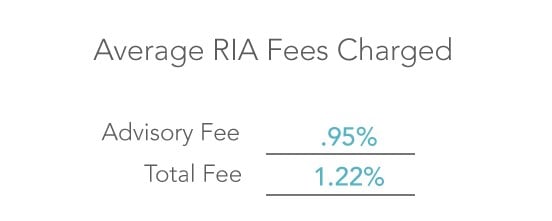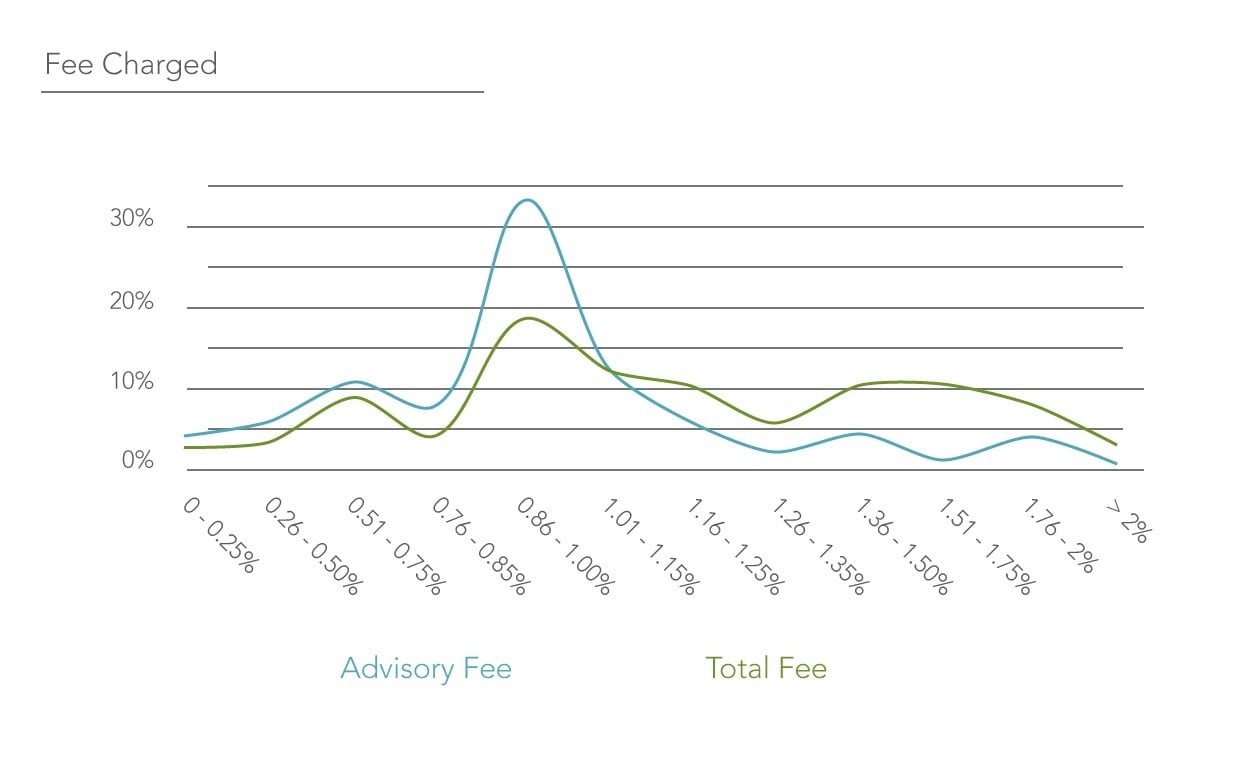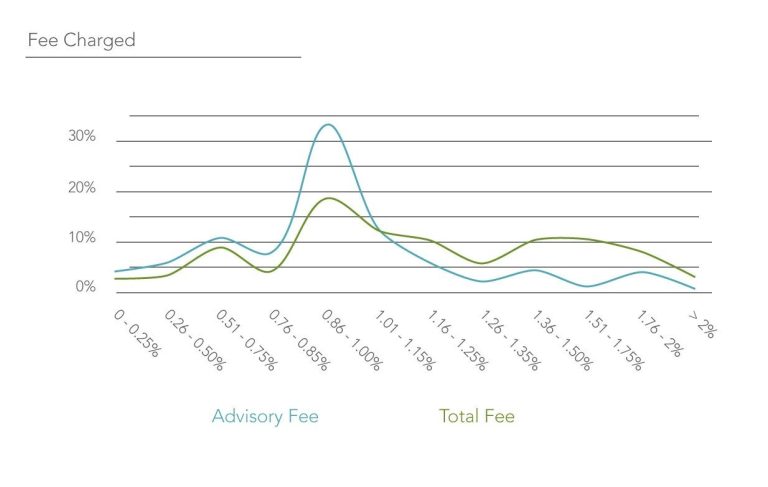The findings in this blog post come from our annual survey of over 1,500 registered investment adviser (“RIA”) firms that was conducted in the first quarter of 2018. This proprietary RIA in a Box study is paired with publicly accessible data provided by the Securities and Exchange Commission (“SEC”). The goal of our annual study is to understand different options that comprise each firm characteristic, and to determine whether specific characteristics affect the growth, size, or operational efficiency of an RIA firm. In this blog post, we focus on the advisory and total fees charged by RIA firms. Over the past two years, we have expanded our study at not only the advisory fee charged, but also the total fee charged to client which would is intended to include underlying investment product or management fees.
This post also serves as a preview of our larger RIA industry fee report which will be published in the coming months which will provide much more granular detail looking at average fees based on investment style, investment products, client size, and more.
2018 Average RIA Industry Fees
Despite continued chatter around potential investment adviser industry fee compression, this year’s survey findings closely mirror our findings from recent years with an average advisory fee of .95% and total fee of 1.22%:

The advisory fee of .95% is down slightly from our 2016 survey results which showed an average advisory fee of .99%. However, it’s possible that this change can be at least partially attributed to a movement towards more advisory firms utilizing a passive investment management style over the last few years. In 2016, 21% of firms survey utilized an exclusively passive investment management style whereas 24% of firms surveyed in 2018 deployed an exclusively passive investment management style. In general, firms managing investment portfolios on a passive basis do charge a lower average advisory fee.
Range of Fees Charged by RIA Firms

As to be expected, the majority of the industry’s advisory fees charged aggregate between .86% to 1.00% with over 30% of all firms surveyed bucketed into this range. On the other hand, the average total fee charged does vary more than the average advisory fee charged with less than 20% of all firms charging an average total fee between .86% to 1.00%.
While there is a correlation between the advisory fees charged and the firm’s portfolio management style as referenced above, the strongest indicator of the advisory fee charged by a firm is generally the average client size of the firm. For example, advisory firms with an average client size of $0 to $250,000 charged an advisory fee of 1.1% and a total fee of 1.3%. On the other end of the spectrum, firms with an average client size of $5 million or more charged an average advisory fee of .7% and total fee of 1.1%.
Furthermore, firms that offer financial planning services also, on average, charge a higher advisory fee of .92% compared to .86% for firms that do not offer financial planning services. In addition, firms that more aggressively adopt multiple technology systems also tend to charge slightly higher average advisory fees.
